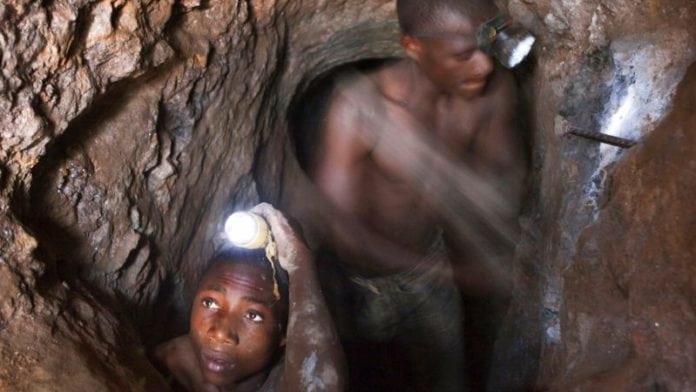
SOUTH Africa’s Department of Mineral Resources (DMR) said there was “no immediate threat” by illegal mining to oil and gas pipeline infrastructure in Johannesburg, but it had commissioned a report on potential risks.
The Sunday Times reported on November 25 that a stadium used for the 2010 World Cup, and other landmarks were at risk because illegal miners had tunnelled under the city close to fuel and gas pipes. This raised the danger of buildings collapsing and deadly explosions, it was claimed by the newspaper.
“While there is no immediate threat to critical infrastructure as has been claimed, Government wants to confirm this assertion scientifically, and proactively deal with this matter not only in Johannesburg, but in other areas where illegal mining occurs,” the department said in an announcement today.
It had asked the Council for Geoscience, which reports to the DMR, to conduct the study with results due in a fortnight.
“The department further emphasises the importance of active participation by all stakeholders in the established Gauteng Illegal Mining Forum,” it said. “This forum, amongst others, deals with immediate pressing matters on illegal mining [and] is empowered to suggest and/or take appropriate remedial action in addressing critical concerns,” it added.
It has been estimated there are some 35,000 illegal miners operating in South Africa’s disused mines.
Illegal miners openly flout personal health and safety to open cement-plugged shafts with explosives on abandoned mines or live underground for extended periods of time, without necessary protective gear, once they have gained access to operating mines, said the Minerals Council in a recent study on the phenomena.
“The zama zamas (illegal miners0 then pose severe risks to legitimate mine employees, safety protocols, shaft infrastructure and stability, equipment, and ultimately the business,” it added.
The problem because so big at Sibanye-Stillwater that the company spent R300m last year on building access and biometric controls at the entry points to its gold mines. In February, it had arrested nearly 1,400 illegal miners at its South African gold shafts last year.
According to Sibanye-Stillwater data, it made 797 arrests in 2017 linked to illegal mining at its Cooke operations and 1,383 overall. In June 2017, it made more than 500 arrests, above the 443 arrests in 2016 as a whole.











